What is 'Chick-fil-A' that allows you to have a franchise with an unusually low investment?

by
Chick-fil-A , the second largest chicken fast food chain in the U.S., knows that operators with franchise stores have a pass rate of 0.13%, lower than that of prestigious Stanford University. Has been done. Many franchise chains need to invest heavily in people who want to have a store, but Chic Filly is characterized by an unusually low investment. Writer Zachary Crockett has compiled a survey on the background of such fast food chains.
Why it only costs $ 10k to 'own' a Chick-fil-A franchise
https://thehustle.co/why-it-only-costs-10k-to-own-a-chick-fil-a-franchise/
A franchise in which brands provide business owners with the right to use trade names and products and business know-how and receive royalties in exchange for brands has the advantage that brands can quickly expand their chains while avoiding financial responsibility. However, business owners have the advantage of being able to use established brands and sales channels, and hopefully create a win-win situation. Although various food and beverage chains have opened stores under franchise agreements, the cost of purchasing a franchise chain in the United States is by no means cheap. According to Crockett's research, the chain seeks an average of $ 1 million (approximately 110 million yen) as the minimum capital for those who want to open a store.
Ranking the amount of capital required to purchase a franchise chain looks like this. The most expensive are Wendy's, Jack in the Box, Taco Bell, KFC Corporation and Burger King . Wendy's is unusually expensive at $ 5 million, four others require $ 1.5 million in capital, and McDonald's has a lower $ 500,000. About 55 million yen). Among them, what is displayed as '0' is Chick-fil-A.
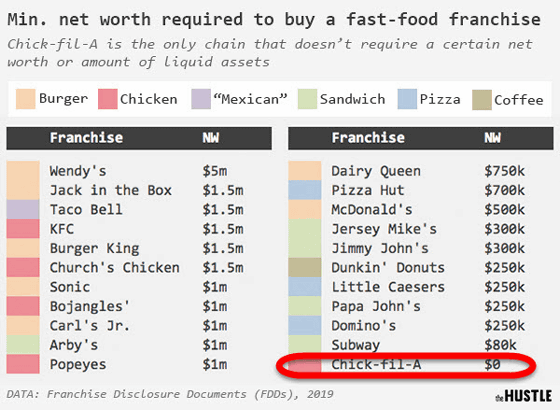
And when you have the above capital and become a member of the franchise, the first thing the franchisee will do is pay the franchise's membership fee. Membership fees vary by brand, but on average, $ 30,000, from $ 50,000 in Jack-in-the-Box to $ 15,000 in Subway. 10,000 yen). Again, the extraordinarily low amount of $ 10,000 (1 million yen) is displayed next to Chickfilly.
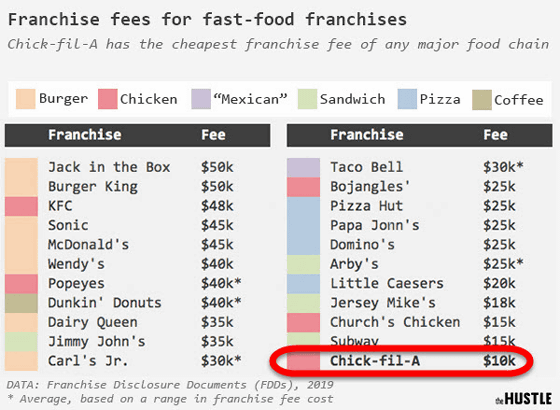
In addition to franchise fees, the franchisee will cover costs for opening new stores, including real estate, construction, equipment, and inventory. The total initial investment varies greatly depending on the type of store, such as whether to build it in a mall or drive in, and where the store is located. On average, the cost of opening a fast food franchise ranges from $ 777,000 (about 85 million yen) to $ 1.9 million (about 210 million yen).
Below is a visualization of the range of initial investment by brand. The Tic Fillay, whose name has been displayed at the bottom of the graph for some time now, has an unusually low initial investment of $ 10,000.
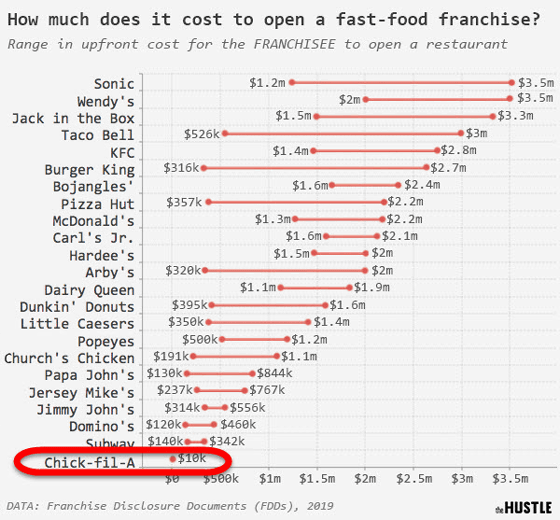
On the other hand, after the franchisee opens, there is a royalty that pays a portion of the sales to the brand, but only 15% of Chickfillay, compared to 4-5% of other brands.
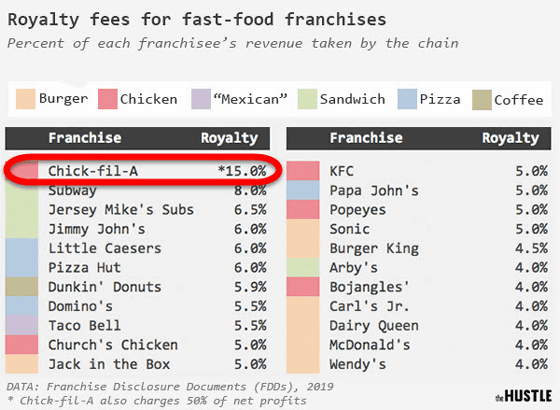
As you can see, Chickfiley is a brand that pays all costs for real estate, equipment and inventory when opening a new store, and instead takes a lot of sales. Compared to Kentucky, Kentucky's royalties are 5%, while Chick Filey has to pay 15% of its sales and 50% of its net profits to headquarters.
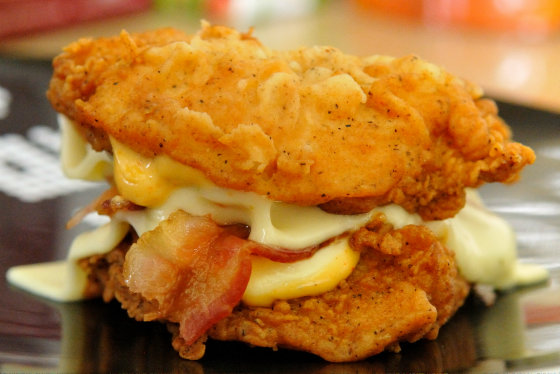
by Michael Saechang
In addition, Chick Filey says that while franchise applications are 60,000 a year, only about 80 people can actually have a store. This is a narrow gate with a pass rate of 0.13%, which is much lower than Stanford University's pass rate of 4.8% and Google's pass rate of 0.23%.
For example, one person who became a franchisee at Chickfilei received 10 interviews, wrote essays 12 times, and submitted copies of high school transcripts. After being selected as an operator, he needed to undergo 'weekly extensive training.' In the case of Chic Fillay, the capital of the operator does not matter so much, and the focus is on how close it is to the local community. 'A Chick Flay is focused on those who are motivated to do their day to day work,' said a Tic Philey spokeswoman.
Chicfilay's franchisee has no ownership of restaurants and equipment, does not invest in businesses, and cannot operate other businesses, so it is not very attractive from an investment perspective. Crockett points out that Chickfilay's operators do not own the store and only work in managerial positions, which in some cases are not truly franchisees.
On the other hand, the reality is that it is difficult for a food franchisee to gain many benefits, except for those who own multiple franchises. According to a franchise business review , 51% of food franchisees earn less than $ 50,000 a year, and only 7 earn more than $ 250,000 a year. %is. The food industry is known for being particularly competitive, requiring the highest investment levels in the industry, high failure rates and low margins. In the case of Chickfilly, such risks are mitigated due to the low initial investment amount, etc., but the mechanism for losing ownership is therefore adopted.
Related Posts:
in Note, Posted by darkhorse_log







